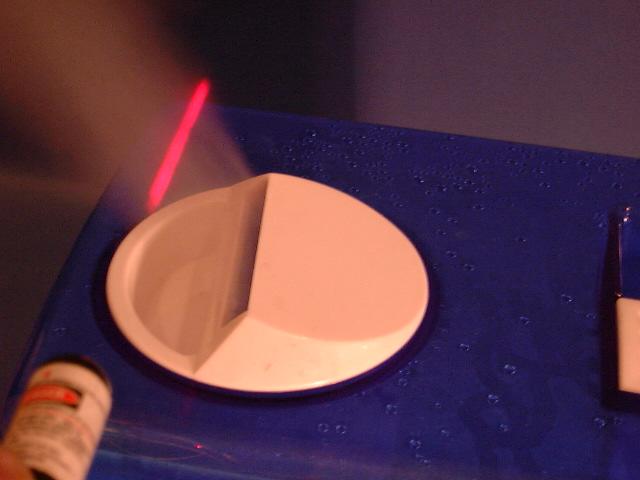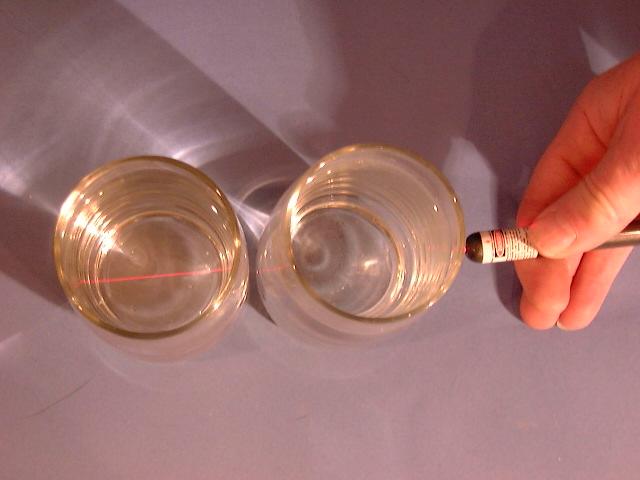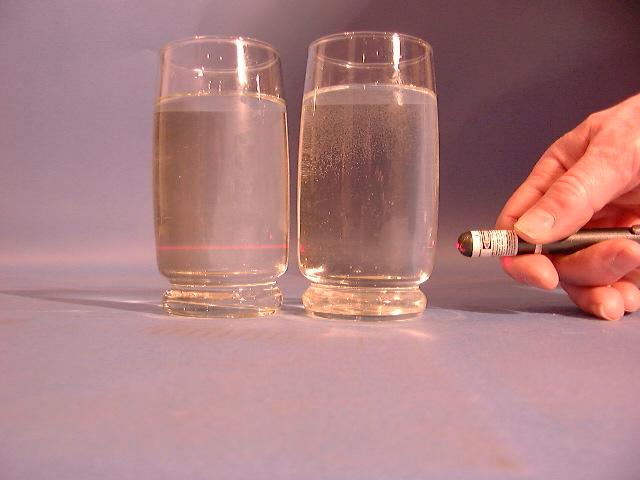
Tyndall effect is easily seen using a laser pointer aimed at the the mist from this ultrasonic humidifier's mist
The Tyndall Effect is caused by reflection of light by very small particles in suspension in a trasnparent medium. It is often seen from the dust in the air when sunlight comes in through a window, or comes down through holes in clouds. It is seen when headlight beams are visible on foggy nights, and in most X-File episodes when Moulder and Sculley check out some dark place with flashlights.

In liquids the tyndall effect can be easily seen by using a laser pointer. If you dilute milk to where it is almost clear, or if you have any type of sol, such as colloidal silver, then the beam of the laser can be easily seen as it travels through the liquid.


Tyndall effect is
seen here using a laser pointer. The glass on the left contains 5 ppm of
HVAC colloidal silver and the one on the right is from the tap after the
bubbles have settled out. Fairly large particle size was used for this
demonstation so it could be caught by the camera in broad daylight. True
high quality CS will have a faint, but perceivabe tyndall when viewed in a
darkened room.